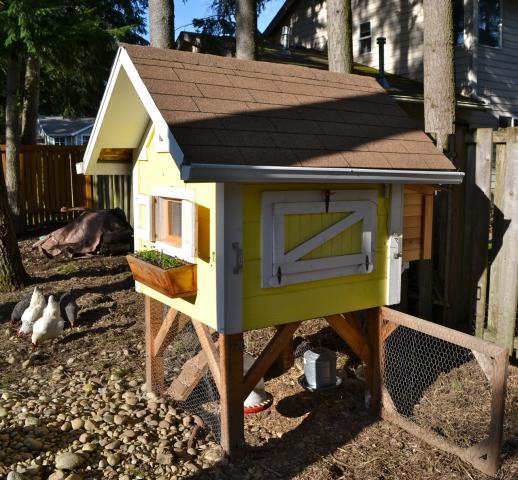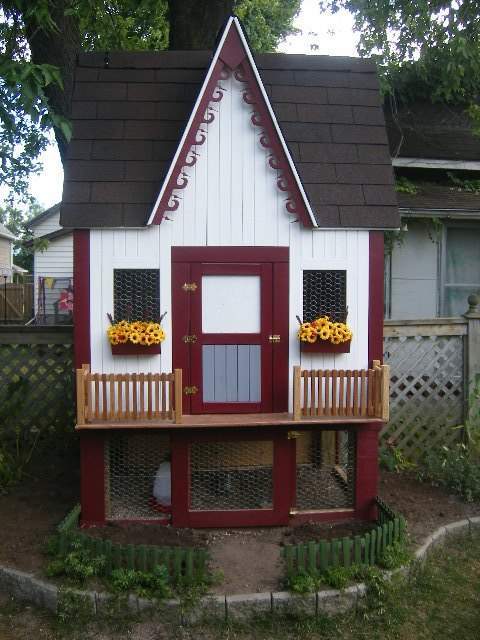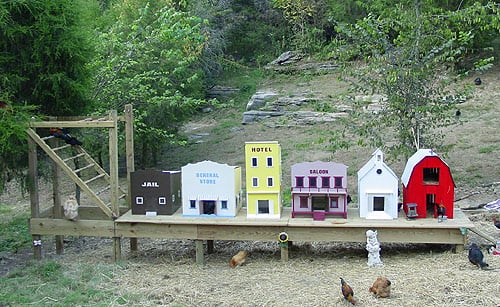Egg - by Enric Torres
Wednesday, October 26, 2011
Sunday, October 16, 2011
Thursday, October 6, 2011
"An Egg Today is Better Than a Hen Tomorrow": Part V The Feed
A happy, healthy chicken will lay the best eggs. And think of it this way: whatever you feed your chickens, you will eventually also eat in their eggs, so it's best to feed them the best foods possible. Chickens are also natural foragers/peckers and will destroy any vegetable and flower garden around (as well as kill off both pest and beneficial insects), it is best to keep them at least somewhat contained so they don't destroy your entire yard/garden/neighbor's yards.
So getting back to the topic: what is best to feed chickens? The real question is, how much work/money are you willing to put in? Here are some options:
- The best form of chicken food is probably going to be organic. You can either buy the organic pre-made stuff online or from specialty stores, but that will definitely cost you a pretty penny. Some brands you can look into that are 100% certified organic are Fertrell's, Homestead Organics, and Nature's Best Organic Feed.
- If you want to just make your own chicken feed (which is recommended, since then you have it all in bulk, save money, and know how fresh it is), there are TONS of resources both online and in your local library. Here is one recipe taken from Greener Pastures Farm:
*** It's not necessary to follow this recipe exactly... just make sure your birds are getting enough protein, which is predominant in the hard red wheat and the legumes. Free-range birds usually find plenty of protein from bugs, etc.
2 parts whole corn (in winter this is increased to 3 or 4 parts)3 parts soft white wheat3 parts hard red winter wheat1 part hulled barley1 part oat groats1 part sunflower seeds (in winter this is increased to 2 parts)1 part millet1 part kamut1 part amaranth seeds1 part split peas1 part lentils1 part quinoa1 part sesame seeds1/2 part flax seeds1/2 part kelp granulesfree choice of granite gritfree choice of oyster shellI store the above items in 6 bins; the corn in one, both types of wheat are mixed in the 2nd bin, barley in the 3rd, oat groats in the 4th, sunflower seeds in the 5th, and the remaining seeds and grains are mixed into the 6th bin. I leave the granite and oyster shell in the bags they come in. I then scoop out what I need into a 5 gallon bucket, and pour back and forth from one bucket to another until mixed well.
- Ronda Jemtegaard - Greener Pastures Chickens, http://www.greenerpasturesfarm.com
Tuesday, October 4, 2011
"An Egg Today is Better Than a Hen Tomorrow": Part IV The Coop
So you've figured out that you can have chickens. The neighbors say "ok", you found the breed you want...now where to put them. Well, this all depends: obviously if you live in the country, you will have a lot more options due to more space available; so for the sake of this blog and people like myself who will most likely live in more urban environments, I have found some ideas for the urban chicken coop.
Backyardchickens.com has some wondeful coop ideas for small, medium, and large coops.
- This lovely yellow coop includes the plans, dimensions, and a step-by-step photo arrangement of how to make this exactly.
- This amazingly charming and detailed coop even has a built in little pen for the chickens to scratch around in.
- If you want something a bit more utilitarian without the frills (but still very nice to look at), then this one might be more to your taste.
Unfortunately, I do not know how this one was made, but it's pretty amazing.
Take a look around their site, seriously. There are tons of amazing chicken coop ideas for all types of yards and budgets.
Backyardchickens.com has some wondeful coop ideas for small, medium, and large coops.
- This lovely yellow coop includes the plans, dimensions, and a step-by-step photo arrangement of how to make this exactly.
- This amazingly charming and detailed coop even has a built in little pen for the chickens to scratch around in.
- If you want something a bit more utilitarian without the frills (but still very nice to look at), then this one might be more to your taste.
Unfortunately, I do not know how this one was made, but it's pretty amazing.
Take a look around their site, seriously. There are tons of amazing chicken coop ideas for all types of yards and budgets.
Subscribe to:
Posts (Atom)







